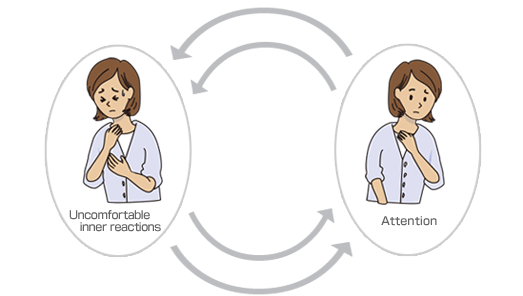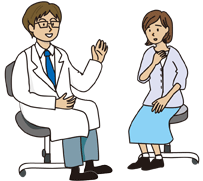
Morita Therapy is a form of psychotherapy which has been proven very effective social Anxiety Disorders, Obsessive-Compulsive Disorders, Panic Attacks, and Chronic Depression.
Morita Therapy appeais to natural healing power that every human being has, and helps people to accept their anxiety and fears as part of their natural feelings as well as to utilize their characteristics and potentiais in more constructive and desire-actualizing ways in their daily living.
Morita Therapy
Morita Therapy was created by Dr. Shoma Morita, the founding professor of the Department of Psychiatry at Jikei University School of Medicine, in Japan, around 1920, and has developed independently from other forms of psychotherapy in Europe and the U.S. Morita Therapy is very unique in its understanding of the mechanism of anxiety and its treatment methods. Three major characteristics of Morita Therapy are: 1) Morita Therapy sees anxiety as one of the natural feelings that every human being has. 2) People become anxious because they desire to perform well and feel afraid of failing and making mistakes. In Morita Therapy, anxiety and people’s desires to live good lives are considered as two sides of the same coin and they are both natural feelings for all human beings. By understanding this mechanism, patients can get out of this vicious circle between attention and intensified feelings. 3) Consequently, people get better when they stop trying to eliminate anxiety and fears rooted in their symptoms and when they accept these feelings as their natural feelings. With Morita Therapy, patients learn to accept anxiety as it is (this is called “Arugamama”), capitalize on their characteristics and potentials, and actualize their desires to live good lives in their actual personal and social lives. Total elimination of anxiety cannot be in people’s best interest as it can lead them to deny their desires to make as good a life as they can for themselves.
Morita Therapy is good for
- Social Anxiety Disorder
- Panic Disorder
- Obsessive Compulsive Disorder
- Somatoform Disorder
- Generalized Anxiety Disorder
- Chronic Depression
Morita therapy is especially effective for:
- Those who have a strong desire to improve themselves
- Those with neurotic characteristics, such as being introverted, hypersensitive, perfectionistic, and hating to lose
※In principle, Morita Therapy is not adapted for schizophrenia or mania.
How do people get fixated by their worries, anxieties, and fears?

It is often the case with depressive and neurotic patients to make every effort to eliminate their uncomfortable inner reactions (such as anxiety and fear). However, this does not often lead them to what they are eager to achieve. On the contrary, the more they try to get rid of these feelings, the more they get focused on them, get bound by them, and fall into a vicious circle between attention and intensified feelings. Thus, people get fixated on their worries, anxieties, fears, as well as irritating inner reactions and symptoms. (This is called “psychic interaction.”)
How can they leave the vicious circle?
In Morita Therapy, these uncomfortable inner reactions (such as anxiety and fear) and the desire to live are considered as two sides of the same coin. People have desires to ”live a good life,” so they worry and become anxious; anxiety is a reflection of our desires for good lives. Knowing this mechanism, you can see how patients can benefit from accepting their anxiety as one of their natural feelings and go on with their lives. By accepting anxiety as it is, they can leave behind their mindset that is fixated on their symptoms and start using their energy and resources in order to work out their desires more effectively and realistically. As they go through Morita Therapy, patients learn to experience their feelings and see the facts as they are. Through this process, patients are likely to be able to notice their healthiness, as well as a variety of the natural rich feelings they have, and to accept themselves as they are.
What is Morita Therapy Outpatient treatment like?

We provide outpatient Morita Therapy for those who wish to receive therapy while attending school and going to work. Outpatient treatment is provided by doctors and clinical psychologists who specialize in Morita Therapy. Diary-keeping may be used in outpatient treatment as well, when patients are considered to benefit from it.
